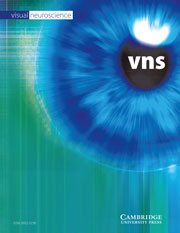Article contents
Molecular diversity of visual pigments in Stomatopoda (Crustacea)
Published online by Cambridge University Press: 01 May 2009
Abstract
Stomatopod crustaceans possess apposition compound eyes that contain more photoreceptor types than any other animal described. While the anatomy and physiology of this complexity have been studied for more than two decades, few studies have investigated the molecular aspects underlying the stomatopod visual complexity. Based on previous studies of the structure and function of the different types of photoreceptors, stomatopod retinas are hypothesized to contain up to 16 different visual pigments, with 6 of these having sensitivity to middle or long wavelengths of light. We investigated stomatopod middle- and long-wavelength-sensitive opsin genes from five species with the hypothesis that each species investigated would express up to six different opsin genes. In order to understand the evolution of this class of stomatopod opsins, we examined the complement of expressed transcripts in the retinas of species representing a broad taxonomic range (four families and three superfamilies). A total of 54 unique retinal opsins were isolated, resulting in 6–15 different expressed transcripts in each species. Phylogenetically, these transcripts form six distinct clades, grouping with other crustacean opsins and sister to insect long-wavelength visual pigments. Within these stomatopod opsin groups, intra- and interspecific clusters of highly similar transcripts suggest that there has been rampant recent gene duplication. Some of the observed molecular diversity is also due to ancient gene duplication events within the stem crustacean lineage. Using evolutionary trace analysis, 10 amino acid sites were identified as functionally divergent among the six stomatopod opsin clades. These sites form tight clusters in two regions of the opsin protein known to be functionally important: six in the chromophore-binding pocket and four at the cytoplasmic surface in loops II and III. These two clusters of sites indicate that stomatopod opsins have diverged with respect to both spectral tuning and signal transduction.
Information
- Type
- Research Articles
- Information
- Copyright
- Copyright © Cambridge University Press 2009
References
- 57
- Cited by

